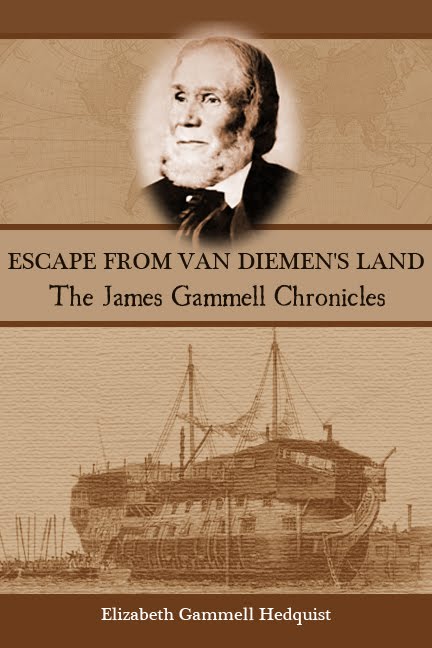No man’s life can be encompassed in one telling. There is no way to give each year its allotted weight, to include each event, each person who helped to shape a lifetime. What can be done is to be faithful in spirit to the record, and try to find one’s way to the heart of the man...(1)
Growing gradually weaker, James was confined to his home during the long Montana winter. He was no longer the robust man that he used to be, with a well-knit frame and a constitution of iron. As spring approached, the days grew noticeably longer. James sat up in bed, and in the presence of three friends, F. J. Jones, W. E. Carter, and Thomas C. Morrissey, took a pen in his trembling hand and signed his name for the last time: “In witness whereof, I have hereunto set my signature at Sheridan, this 24th day of March 1881, signed James Gemmell.” He had appointed his wife, Susan Maria Gemmell, executrix of his will, and his son-in-law James Duncan as executor to assist Maria in the settlement of his estate. He bequeathed all of his real and personal property to Maria, with instructions that the estate be kept or sold, whichever may be in the best interest of his wife and children:
It is my wish and desire that my children and family shall remain together as heretofore, and that their mother shall remain with them and take care of them as she always has done heretofore, and especially that the little ones shall be educated as well as circumstances will warrant.(2)
Just two weeks later, on Wednesday, April 6, his wife, Maria, and eight of his children gathered silently around his bed—the two little ones, George, age five, and John, age ten; the older children, Alice, age thirteen, Virginia, fifteen, Andy, nineteen, and Charlie, twenty-two; and his two married daughters, Josephine with her four children, and Jeanette with her two children.
At eleven o’clock that morning James drew his last breath. After many months of illness and pain, he was finally at peace. A life of adventure had ended too soon, nevertheless, in his final hours the true heart of the man was revealed. His greatest concern was for the education of his children, the well-being of his posterity. We wonder if, in those last moments, he might have had a glimpse of his descendants who would follow in generations to come. No doubt his greatest accomplishment was his posterity; he was the father of eighteen biological children, “well-educated and well-read for their opportunities.” In addition to his loved ones, “many an old mountaineer will read [his obituary] and drop a tear to Uncle Jimmy’s memory and say good-bye, peace be with you.”(3)
 |
James Gemmell's grave, Sheridan Cemetery
Courtesy of Bary Gammell |
James was buried in the Sheridan Cemetery, on Saturday, April 9. The present-day stone marker was not erected until 1981 (one hundred years after his death) by his great grandson Blake Hansen Gammell. Blake obtained a large granite stone at the same quarry from which the stones for the Salt Lake Temple were cut. Original drill markings from the 1800’s are still visible on the stone. The granite, weighing several tons, was transported by truck to Sheridan. Then Blake had to dig a hole, fill it with sand and gravel, and put the granite piece with its bronze plaque into place with the aid of a truck and a crane. According to Blake, he “had a hell of time doing it all!” Since the grave was unmarked, it took him several days and a lot of research to locate the exact burial spot.(4)
A few months after James died, Maria traveled to Charleston, Wasatch County, Utah, to visit her eighty-year-old mother, Avis Hill Brown. Avis owned her own home, and her son George and his wife were caring for her. During the visit Grandmother Brown persuaded her daughter to sell her home in Sheridan and return to Utah in order that she might end her days in Maria’s care. On November, 28, 1882, Maria sold the ranch property to Samuel McCrea for the sum of $2,850.00. But before the business was settled in Sheridan, Grandmother Brown died (1884). Consequently, Maria never returned to Utah.(5)
 |
Susan Maria Brown Gemmell, c. 1892
Courtesy of Cathy Hall |
About 1887, Maria left Sheridan, taking her younger unmarried children, Charlie, Andy, Virginia, Alice, John and George, and settled near Anaconda. At the end of 1894, believing that her health would be benefited, she returned to Sheridan and put herself under the treatment of Dr. George W. Rightenour, her family physician. She began to grow worse and sent for her daughter, Virginia Garrity, who remained with her to the time of her death. Maria died on Monday, Feb. 3, 1896, at her home on Water Street at age sixty-four.(6)
________________________
- From the prologue to David Attenborough’s film Gandhi.
- James Gemmell’s will, Probate records, Madison County Courthouse, Virginia City, Montana, File #25.
- Obituary of James Gemmell, Dillon Tribune, April 9, 1881.
- "Short history of Mr. and Mrs. Albert Walton Criss" ( including information on the Francelia Gammell family), Church History Library, MS 147774.
- Virginia Gemmell Garrity, Letter to Ralph Vary Chamberlin, 1922.
- Obituary of Susan Maria Gemmell, The Madisonian, Virginia City, Montana, Feb. 8, 1896.















